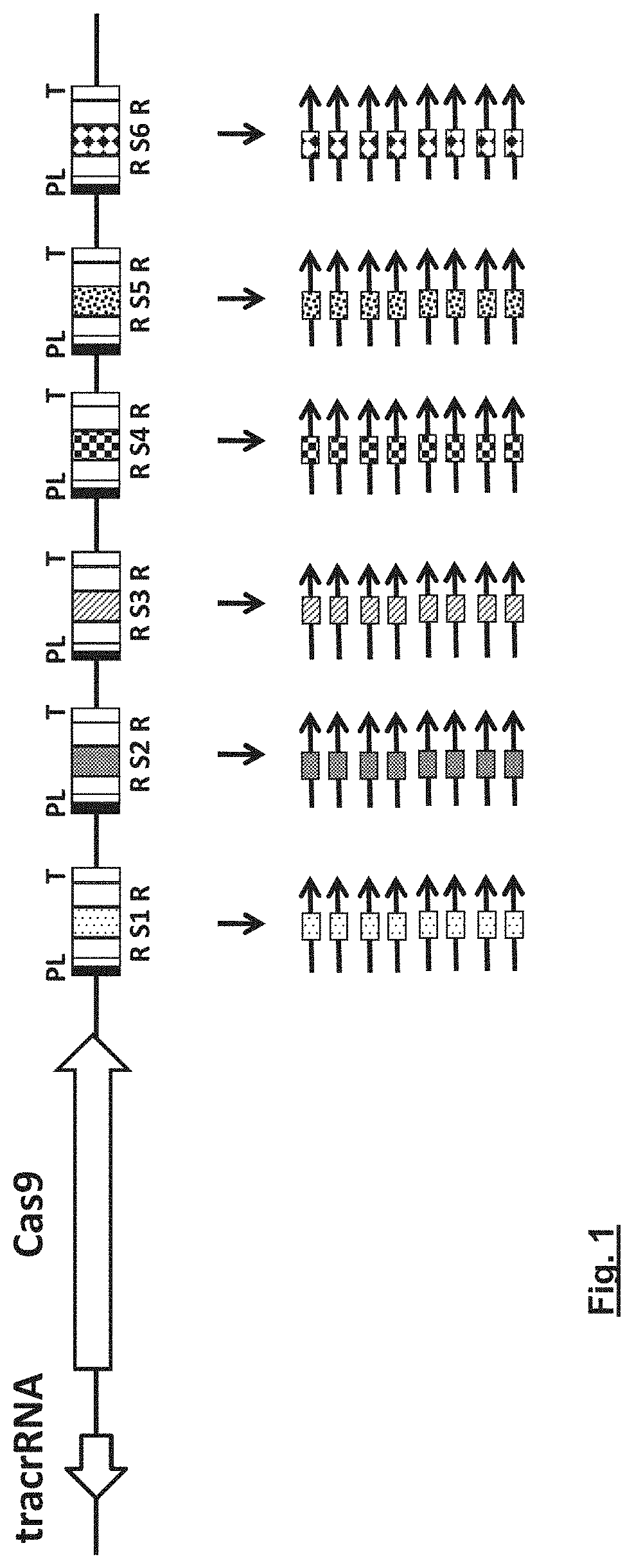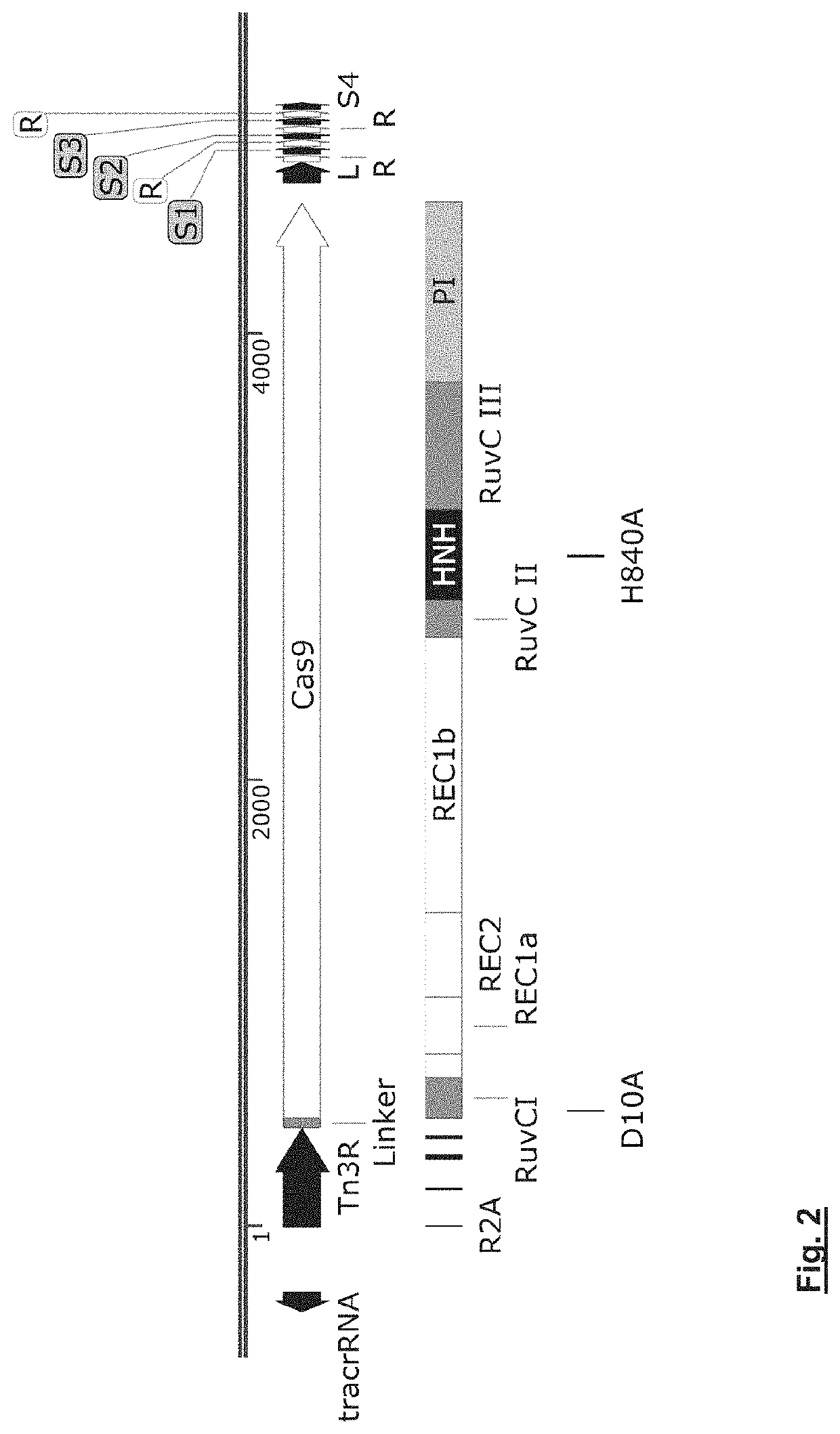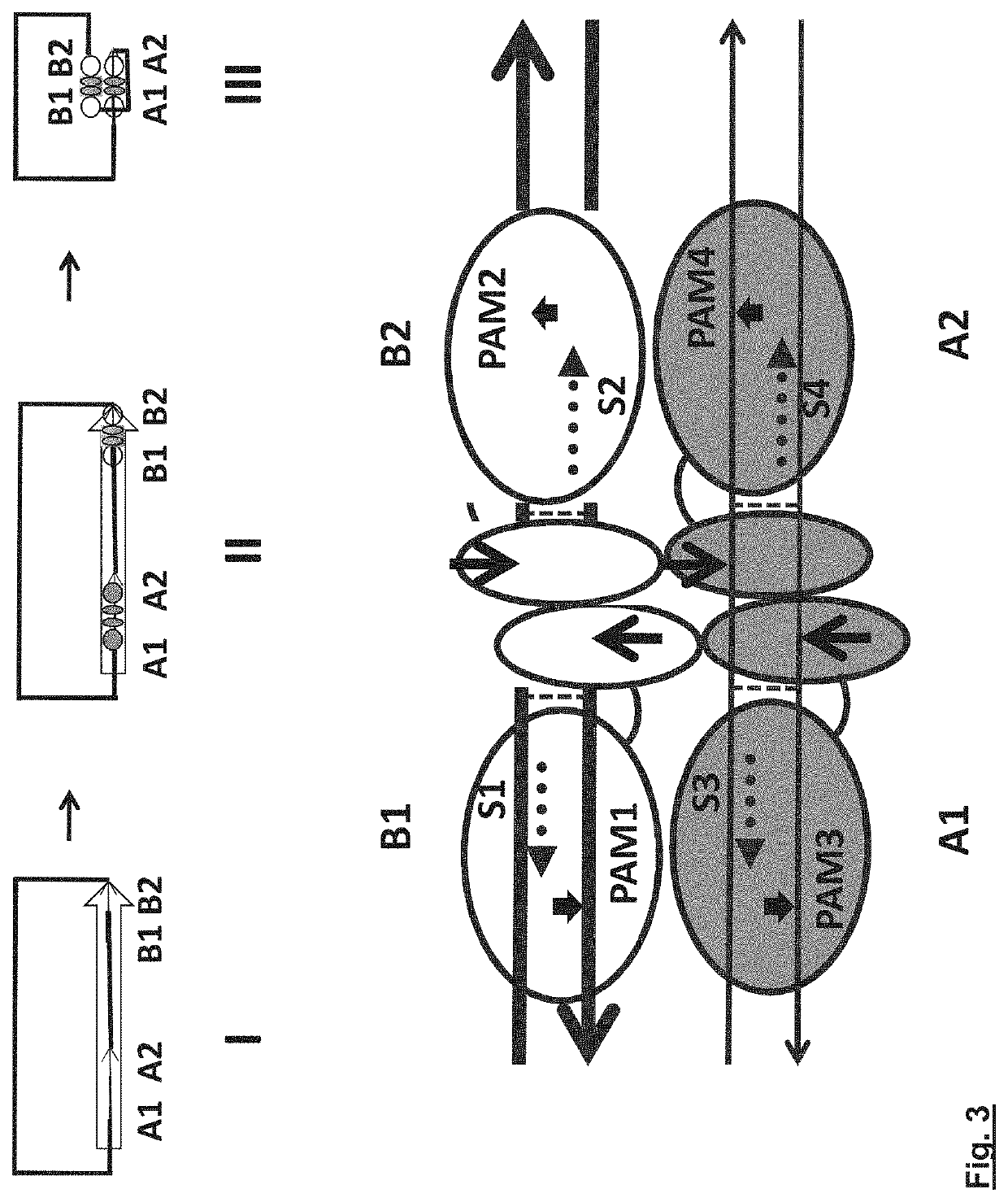Delivery vehicle
a delivery vehicle and nucleic acid technology, applied in the direction of antibacterial agents, medical preparations, viral/bacteriophage medical ingredients, etc., can solve the problems of pneumonia and death
- Summary
- Abstract
- Description
- Claims
- Application Information
AI Technical Summary
Benefits of technology
Problems solved by technology
Method used
Image
Examples
example 1
[0215]Exemplification of the Construction of a c-Transmid-Mediated Delivery System to Deliver Selected Nucleic Acids of Interest into Bacteria
[0216]Example 1 describes the construction of a conjugative Transmid (c-Transmid) delivery system as a proof-of-concept for the delivery of selected nucleic acid(s) of interest—hereafter termed the “Cargo”—to strains of Escherichia coli and other bacteria. Delivery is by infection in a bacteriophage lambda phage coat protein, and / or by transmission to other bacteria by conjugation. There is a possibility of transposition of the Cargo to the bacterial chromosome.
[0217]The c-Transmid delivery system is constructed from two components: (i) the “Ship”, carrying functions required for replication, phage packaging and conjugal transfer; and (ii) the plasmid Cargo shuttle cloning vector that carries the Cargo plus the “docking” machinery (the “Dock”)—the Cre-lox system, that delivers the Cargo to the Ship.
[0218]The c-Transmid c-TNB001, the delivery v...
example 1.1
Construction of a c-Transmid, c-TNB001
[0245]The scheme for the construction of the c-Transmid, c-TNB001 is shown in FIG. 7: it is constructed by combining sequence elements from the cosmid pBeloBAC11 (template A), the large conjugative plasmid RK2 (template B), and a derivative of plasmid pGRG36 carrying the Tn7 elements but with the addition of a lox site between the Tn7 TIRs giving pGRG36::lox (template C). The overall strategy for construction (i) to divide the entire construct into 13 segments where each segment is generated as 13 PCR amplicons. (ii) Then overlapping sets of neighbouring such amplicons are combined together by Gibson assembly (Gibson D G, et.al. Nature Methods 2009; 6: 343-345, hereby incorporated by reference in its entirety) and cloned into a derivative of pBeloBAC11 to generate four plasmids designated I, II, III, IV. (iii) Since unique restriction sites are introduced with the appropriate PCR primers during the amplification of the segments, the four Gibson-...
example 1.2
Construction of pNB300, the Plasmid Cargo Shuttle Cloning Vector
[0262]The total size of this Cargo vector pNB300 is 4851 bp (FIG. 14). It replicates from the p15A ori employed from pACYC184. It contains two inverted lox sites, lox71 and loxN, between which the dihydrofolate reductase gene, dhfr, is located, which is used as a selectable maker for a Cre-mediated recombination event. The Cargo can be cloned at unique restriction sites NotI and XhoI. Cre is constitutively expressed from this Cargo vector. ccdB gene is under the regulation of lac operator, which will be a negative selection of the Cre-recombinant. See FIGS. 15 and 16 for more detailed description. The primer sequences used in this Cargo plasmid vector construction and the annealing sites on each plasmid are shown in Table 4. Template plasmid denoted A is described in the figure legend of FIG. 15. Tm is given in ° C.
[0263]
TABLE 4Primers used in the design of the Cargo vector, pNB300.TemplatePrimerSequence 5′ to 3′plasmid...
PUM
 Login to view more
Login to view more Abstract
Description
Claims
Application Information
 Login to view more
Login to view more - R&D Engineer
- R&D Manager
- IP Professional
- Industry Leading Data Capabilities
- Powerful AI technology
- Patent DNA Extraction
Browse by: Latest US Patents, China's latest patents, Technical Efficacy Thesaurus, Application Domain, Technology Topic.
© 2024 PatSnap. All rights reserved.Legal|Privacy policy|Modern Slavery Act Transparency Statement|Sitemap



